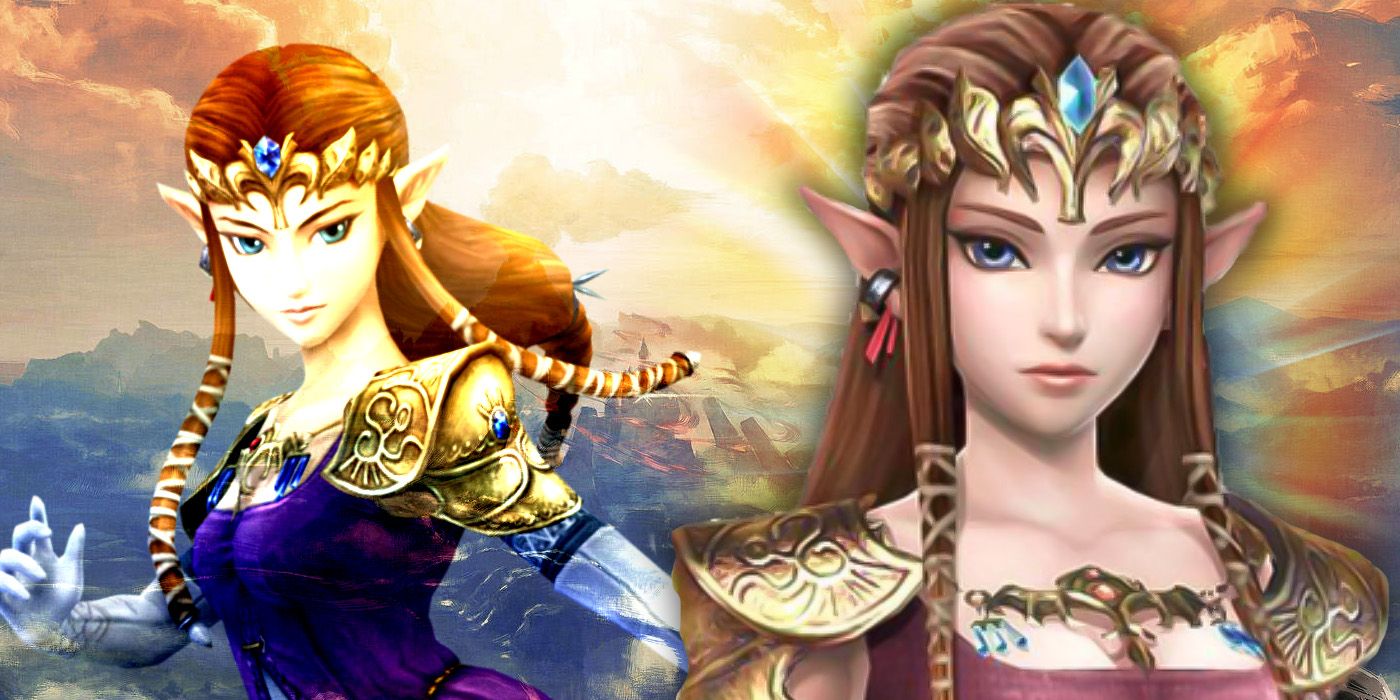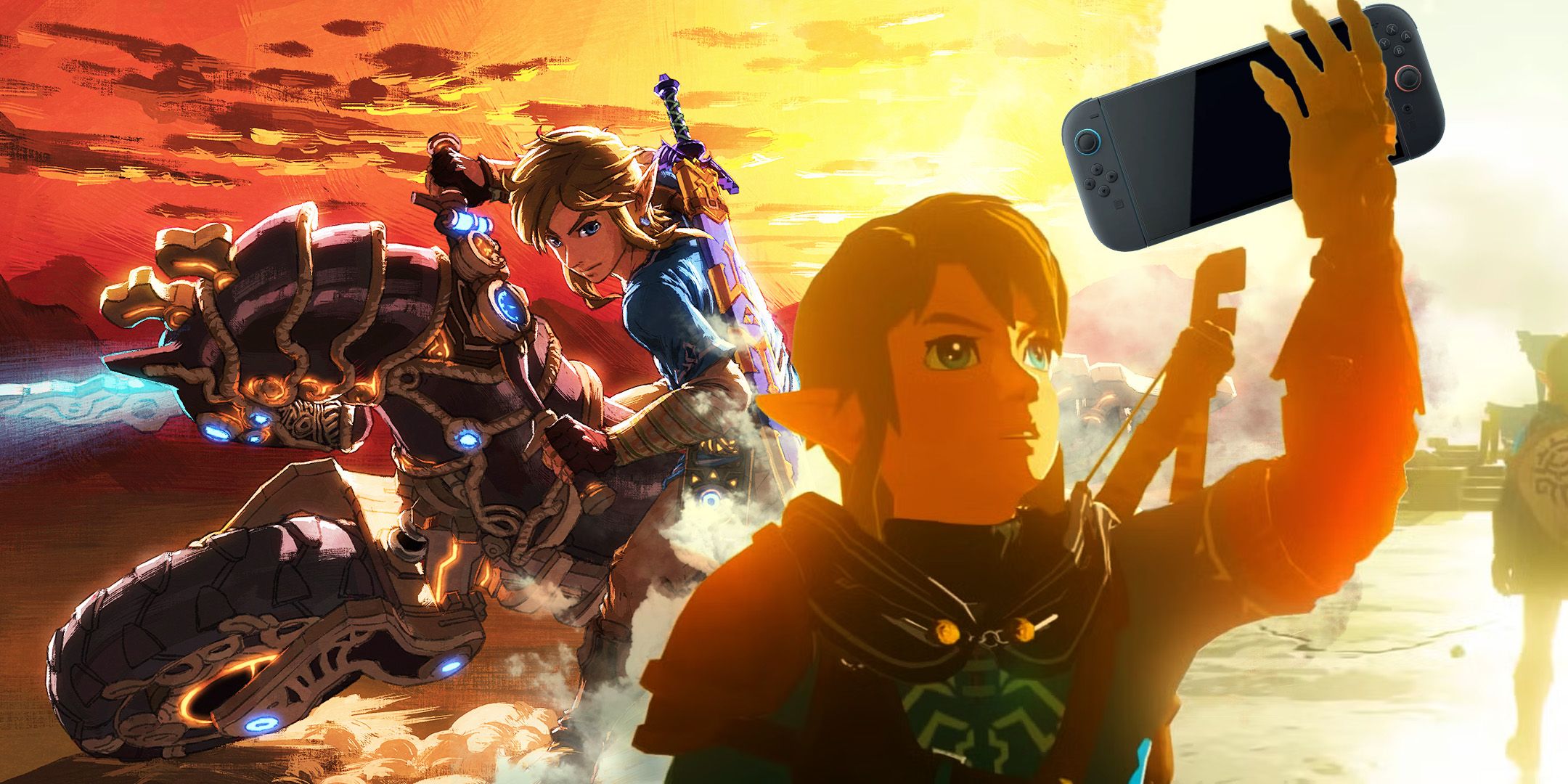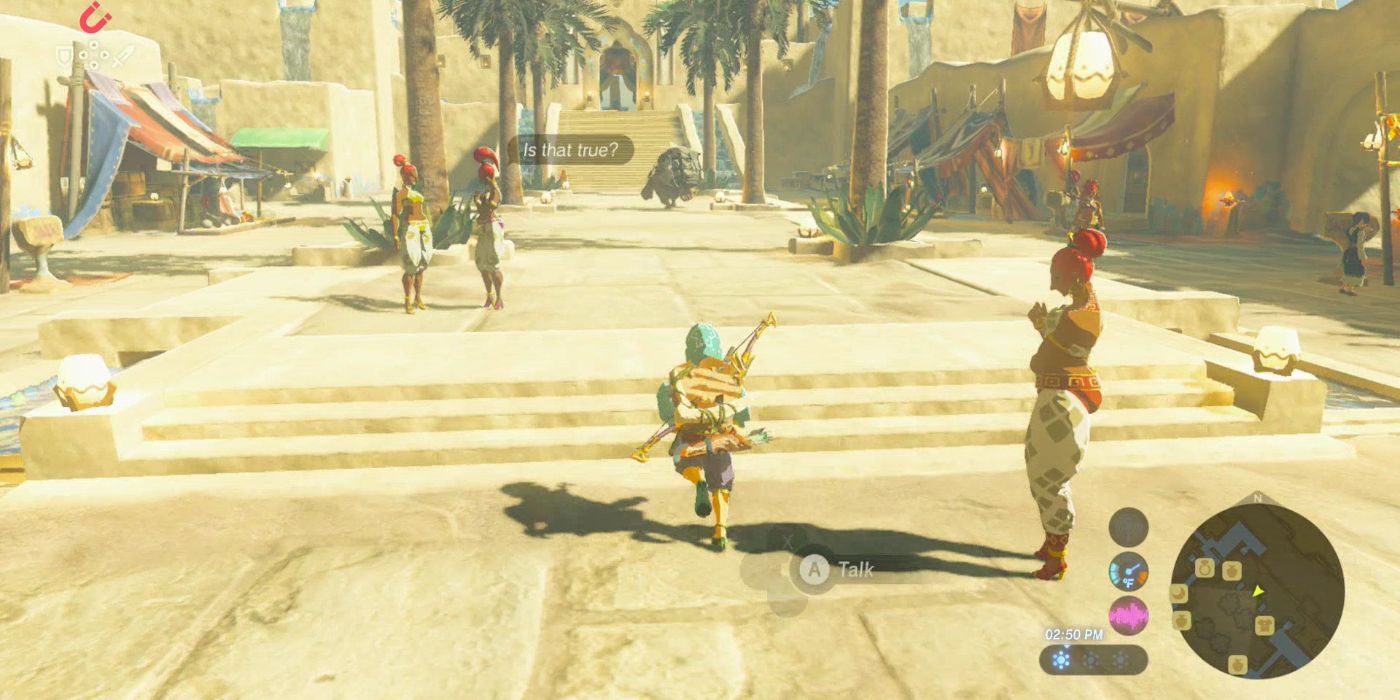The Legend of Zelda: Tears of the Kingdom was a relatively strong follow-up to Breath of the Wild. TOTK brought with it a number of innovations, not just within the context of this series, but also the gaming industry as a whole. It was, for the most part, revolutionary enough to garner critical and commercial success, although one could argue that its legacy is perhaps not quite as long-lasting as Breath of the Wild’s is. However, for all its sweeping changes and new features, the biggest issue with TOTK is its recycling of Hyrule.
Of course, it introduced floating islands and the seemingly unceasing Depths, but both of these felt bereft of the same level of discovery that Hyrule held. Naturally, one would assume that TOTK’s sequel would switch settings, if only to add a little diversity to the experience and not force players to trek across familiar lands. However, that may very well not be the case, and if TOTK’s sequel is insistent on sticking with the same Hyrule, it needs to alter one key detail to avoid growing completely stale.
TOTK’s Sequel Could Keep The Same Hyrule
Nintendo Might Just Reuse It Again
As much as I’d like to believe that TOTK’s sequel will be different from its predecessors in almost every conceivable way, I find that hard to believe. This particular subseries of the Zelda franchise is so steeped in its world and gameplay style that to transport Link to another version of Hyrule or an entirely different setting altogether seems unbelievable, if not a tad impractical. While there’s little precedence for other open-world games keeping the exact same world per entry, if anyone were to do it, it would be Nintendo.
Outside of a handful of new additions, the focus on building above and below Hyrule meant that the land itself became somewhat neglected.
So, there is a very good chance that the third, and potentially final entry, in this series will share the same setting as the previous two games. However, if that is to be the case, then Nintendo needs to do more than add floating islands and an underground portion to Hyrule. It isn’t that either inclusion hurts the overall exploration experience, as more surface area to explore is generally a good thing. Rather, outside of a handful of new additions, the focus on building above and below Hyrule meant that the land itself became somewhat neglected.
That isn’t to say that TOTK’s version of Hyrule is exactly the same, as the passage of time affected it somewhat. There are stones falling from the sky, new structures to gawk at, and a plethora of explorable caves, all of which do genuinely transform Hyrule. However, these are, by and large, repetitive, with each cave feeling indistinguishable from the last, and the various new structures appearing across the grassy plains and sandy dunes rarely feeling distinct enough to warrant wandering over to them.

Related
10 Reasons Zelda Should Be Playable In TOTK’s Sequel
Playing as Link in The Legend of Zelda has been the norm, but it’s time for a change. The titular character deserves her chance to shine, too.
If TOTK doesn’t pick a new Zelda setting beyond Hyrule, then it needs to do more with Hyrule itself. If anything, the world needs less surface area, as the Depths were dull to explore and the floating islands, while beautiful, often felt limited and sporadic. It distracted from the ground-level exploration that defined Breath of the Wild, rather than complementing it, and that is TOTK’s greatest flaw. It needed to do more with Hyrule, not less, and that’s what its successor should focus on.
TOTK’s Sequel Needs New Towns
It’ll Help Diversify Hyrule
Of course, beyond altering Hyrule’s topography to make it feel like an entirely different world, Nintendo could add new towns and villages for players to visit. One of the best aspects of BOTW was the contrast between its peaceful apocalyptic setting and the lively towns you could visit. Stumbling across Hateno Village and hearing its whimsical and relaxing theme play was not only a welcome change of pace but a genuine and meaningful respite from the endless enemies and violence happening across the rest of Hyrule.
This is really the case with any of Breath of the Wild’s towns and stables, with each one slowly inviting the player in, allowing them to take a moment to breathe, take it all in, before venturing back out on their adventure. Tears of the Kingdom introduces some new areas to Hyrule, the most notable of which is Lookout Landing. However, beyond this singular large settlement and a handful of new buildings, there’s little for players to discover, at least in terms of lived-in towns and villages.
A handful of new locations in Tears of the Kingdom include Mipha’s Court, the Tarrey Town Construction Site, Yunobo Co., Bedrock Bistro, and the Hebra Trailhead Lodge. However, the majority of these consist of one or two buildings and are usually predominantly intended to house quest givers and little else.
Exploration in TOTK needed improving, as often its world felt too large and unapproachable, especially within the Depths. The inclusion of more towns could have helped with that, added more life to Hyrule, and made it feel substantially more distinct from Breath of the Wild. Because, as much as TOTK is mechanically innovative, its setting and atmosphere feel iterative. TOTK almost attempts to replicate the hauntingly beautiful apocalypse of BOTW without committing to it, when it should have ditched it in favor of a more hopeful tone as the people of Hyrule try to rebuild.
Perhaps Castle Town could have been even partially rebuilt in the eight years between Breath of the Wild and TOTK, or new settlements could have arisen in place of the dozens of ruined towns across Hyrule. It is odd that everyone keeps to the places they know, rather than attempt to venture out and start fresh, especially as Tarrey Town in BOTW proves that people want to build new settlements. However, as much as I hope Nintendo does add more settlements, they should also try to do something new with them.
Zelda Towns Need To Feel More Like Puzzles
There Should Be More Like Gerudo Town
One of the most interesting locations in Breath of the Wild and, by extension, TOTK, is Gerudo Town. In Breath of the Wild, Link can’t simply enter the town like he can with all the others. It is a female-dominated society that doesn’t welcome men, and so Link is rejected. So, he has to find a different approach, which, in this case, is to adorn the garb of the Gerudo people in an attempt to pass as a woman. It is a simple change, but one that makes gaining access to this secretive town almost like a puzzle.
TOTK’s sequel should focus more on this style of town, making some, if not all, of the new additions to Hyrule their own puzzle that the player has to solve in order to gain access. Perhaps with one, Link has to use his suite of abilities to find an innovative way in, and the other requires knowledge of that place and its people to gain entry, something the player could learn by visiting a nearby Shrine. However Nintendo chooses to do it, making entry to towns a gameplay mechanic in and of itself would help make exploring Hyrule enjoyable again.

Related
I Can’t Believe TOTK Is Wasting Its Game-Changing Switch 2 Opportunity
Zelda: Tears of the Kingdom is missing the opportunity to make the game bigger than ever with a buffed up launch version for the Switch 2.
There is a lot that TOTK’s sequel must change to not only improve on its predecessors but also to stand out in its own right. Whatever it becomes, especially if it is the final entry in this series, it needs to be truly special. It would be a shame for the next entry to feel like diminishing returns, especially now that Nintendo can leverage the power of the Switch 2 to create a better and more dynamic open-world. Whatever happens, I just hope that Tears of the Kingdom’s sequel focuses more on prioritizing Hyrule rather than building away from it.




















